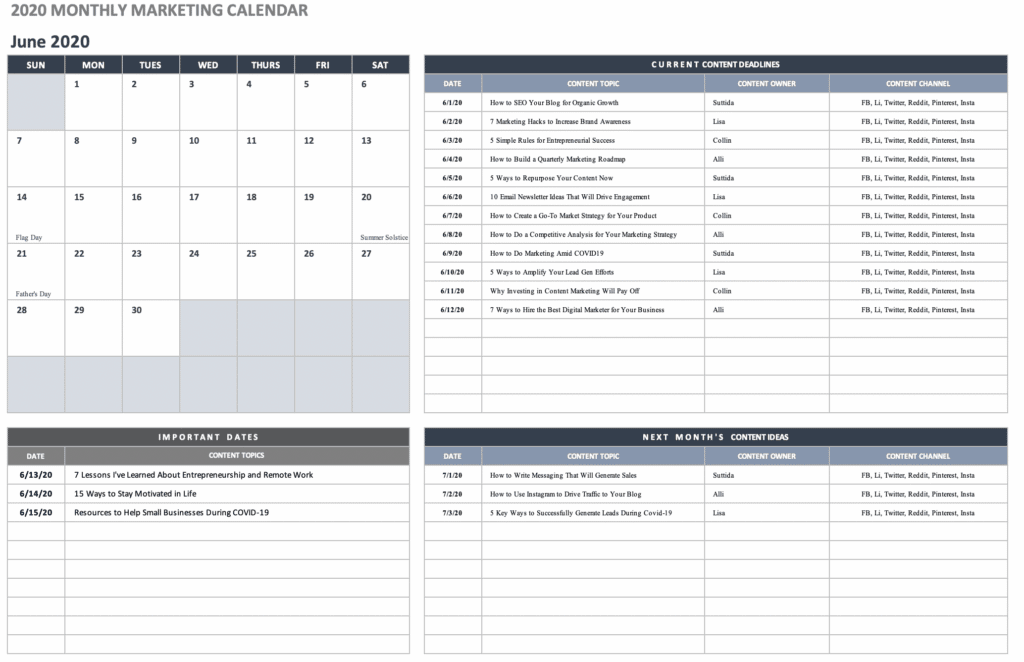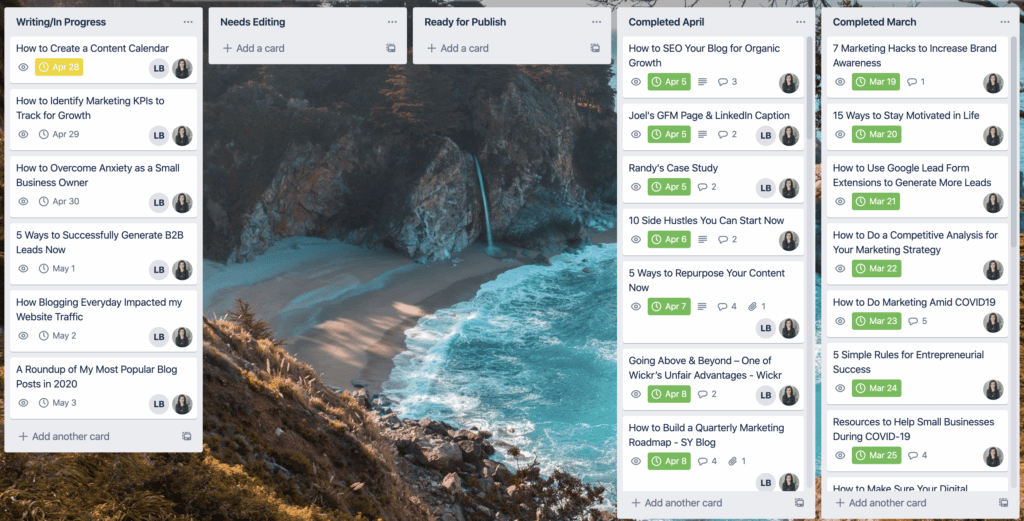Do you know what content you’re going to be publishing and sharing out this week? What about the rest of this month? Do you have a consistent schedule laid out so that everyone in your company has visibility?
A content calendar is a great way to keep track of your output, plan, stay organized, and align departmental efforts. From the product team to sales and marketing, the content needs are different — and having a content calendar can save a ton of time when it comes to figuring out what to publish as well as when.
No matter the size of your company, trying to organize and get content written can feel overwhelming. For starters, everyone is busy, and making time to pump out content may feel like an unnecessary task. However, can we all just agree that content plays an instrumental role when it comes to lead generation, demand generation, and sales?
In today’s blog post, I’m going to cover the following:
- Why you need a content calendar
- How to create a content calendar that works
- How to implement a content production process
- How to keep your content calendar updated
Why Do You Need a Content Calendar?
Plan your work and then follow your plan. More specifically, failing to plan is planning to fail, as the saying goes. Having a content calendar is similar to the reasons why you would create an overall marketing roadmap — it serves as a navigational guide to what’s coming, why, who’s assigned, and so on.
Additionally, being able to plan ahead also allows you to easily shift and be flexible should other content initiatives pop up as a priority over existing ones. And before you put a content calendar in place, you have to also think about the goals you’re trying to achieve as it pertains to the business objectives. Here is an example to consider:
Business Goals:
- Increase revenue
- Build brand awareness
- Generate high-quality leads
To tie into these business objectives, here are content goals you can consider:
- Increase website traffic
- Gain more blog subscribers
- Nurture blog subscribers into qualified sales leads
- Close leads into sales
Establishing your content goals will also help you understand how much content you need to be pushing out. This is key to making sure that the rest of your team is focused on the results that your content efforts will bring in over the actual implementation.
In other words, it is important to keep the bigger picture in mind while executing to keep the “why” top of mind vs viewing it as a task that needs to be checked off every week or month.
How to Create a Content Calendar That Works
Of all the content calendars I’ve seen and implemented myself, the ones that take on the approach of “less is more” have always been the best. What I mean by that is they are easier to follow, understand, and add to or modify.
So instead of giving a ton of different options, I’m going to walk you through exactly what’s worked well for me and hopefully inspire you to do the same for yourself.
For starters, what works well is collaboration via a Google Sheet. From there, you can then move into implementation (e.g. drafting, research, assigning, etc.) in an actual project management tool itself. Here’s the template I love using to help me plan by SmartSheet:

Once the content is planned out, I then put it all into an actionable format where everyone involved in the content production process is easily notified like this:

How to Implement a Content Production Process
Aside from planning out the content and then putting it into an actionable plan, the next step is to ensure that there is a solid process within the actual implementation itself.

Try to keep the production process as simple as possible. Doing so will alleviate having too many cooks in the kitchen and allow for progress. Publishing content is the best way you’ll be able to understand which types of content:
- Drive the most organic traffic
- Drive the most engagement
- Generate the most leads
- Help enable sales
How to Keep Your Content Calendar Updated
Now that you’ve created a content calendar, an actionable roadmap, and a process, the next thing is to figure out how to keep it updated — as well as staying ahead with the planning.
Just as you would with the process of writing your content, treat the planning process just the same. Collect ideas from all departments within your organization, prioritize the content, look at current industry trends, and look at hot topics and conversations happening.
Additional ways and tools that can help you ensure you have enough content ideas to keep your calendar updated are these:
- Ahrefs — Great for SEO (deep dive into link analysis, competitors, etc.) and for seeing trending content within your industry.
- Buzzsumo — Similar to Ahrefs, you can see trending content topics and influential people.
- Google Trends — A simple search can help you see what’s trending globally.
- Google Search — Easily see the top-ranking content and often a specific topic is searched for.
- Customer Feedback
- Commonly Asked Questions
- Sales Objections
- Sales Requests
- Product Explanations and Deep Dives
- Content Repurposing of Popular Topics
Further, assign individuals to manage your content calendar from start to finish and ensure there is organizational buy-in on the role it plays with overall business objectives.
Wrapping It Up
One of the most important aspects of having a content calendar is that it keeps you on track to achieve the content goals you’ve put into place. Again, these content goals should align with business objectives, displaying the role that content will play in driving tangible results.
Make sure that as you plan ahead, you’re also flexible when it comes to making quick decisions on content that may better serve you in a certain time-period over what’s already slated to go out. Having a flexible content calendar doesn’t mean you deviate from your goals, but that you allow room for improvement and changes as needed.





